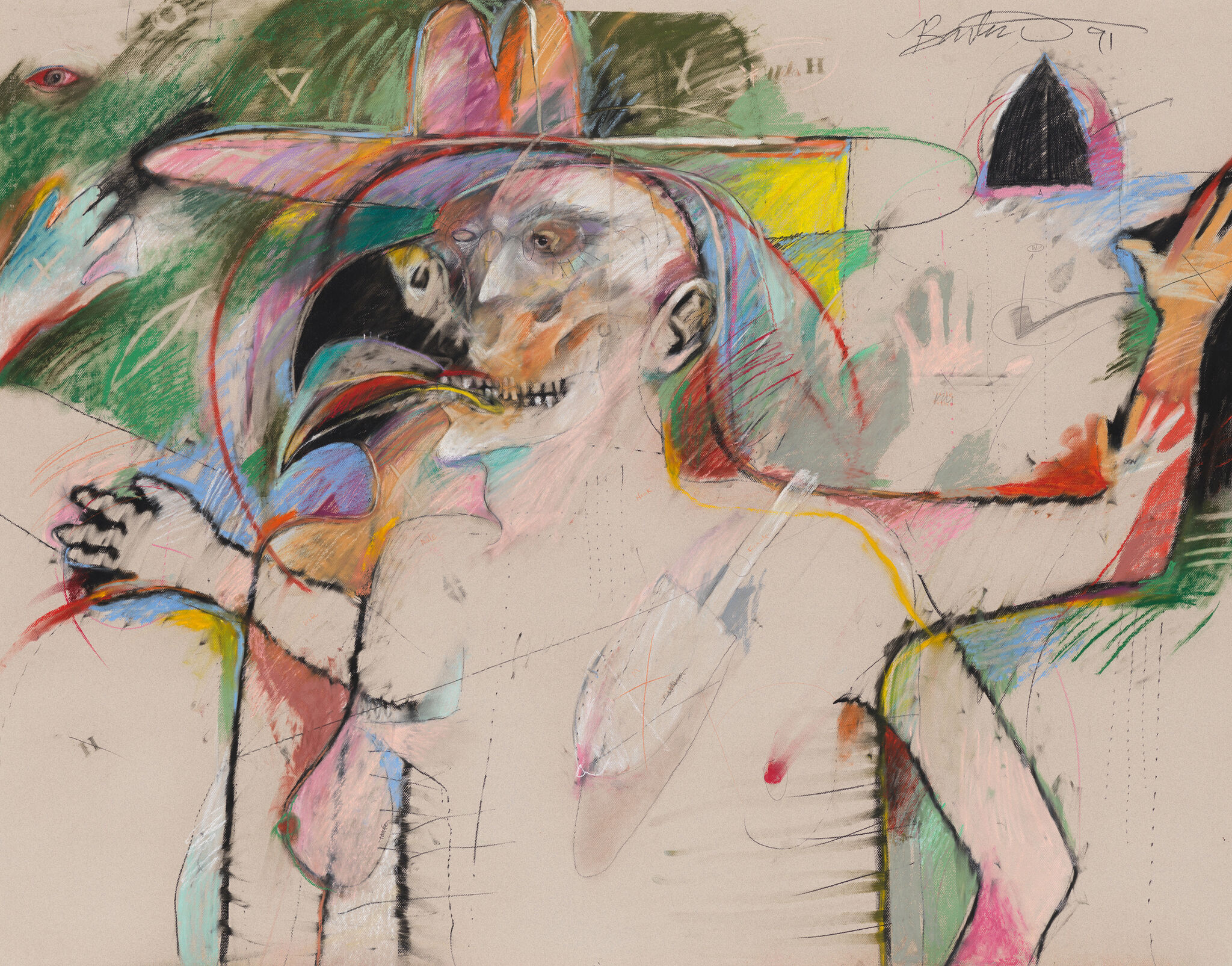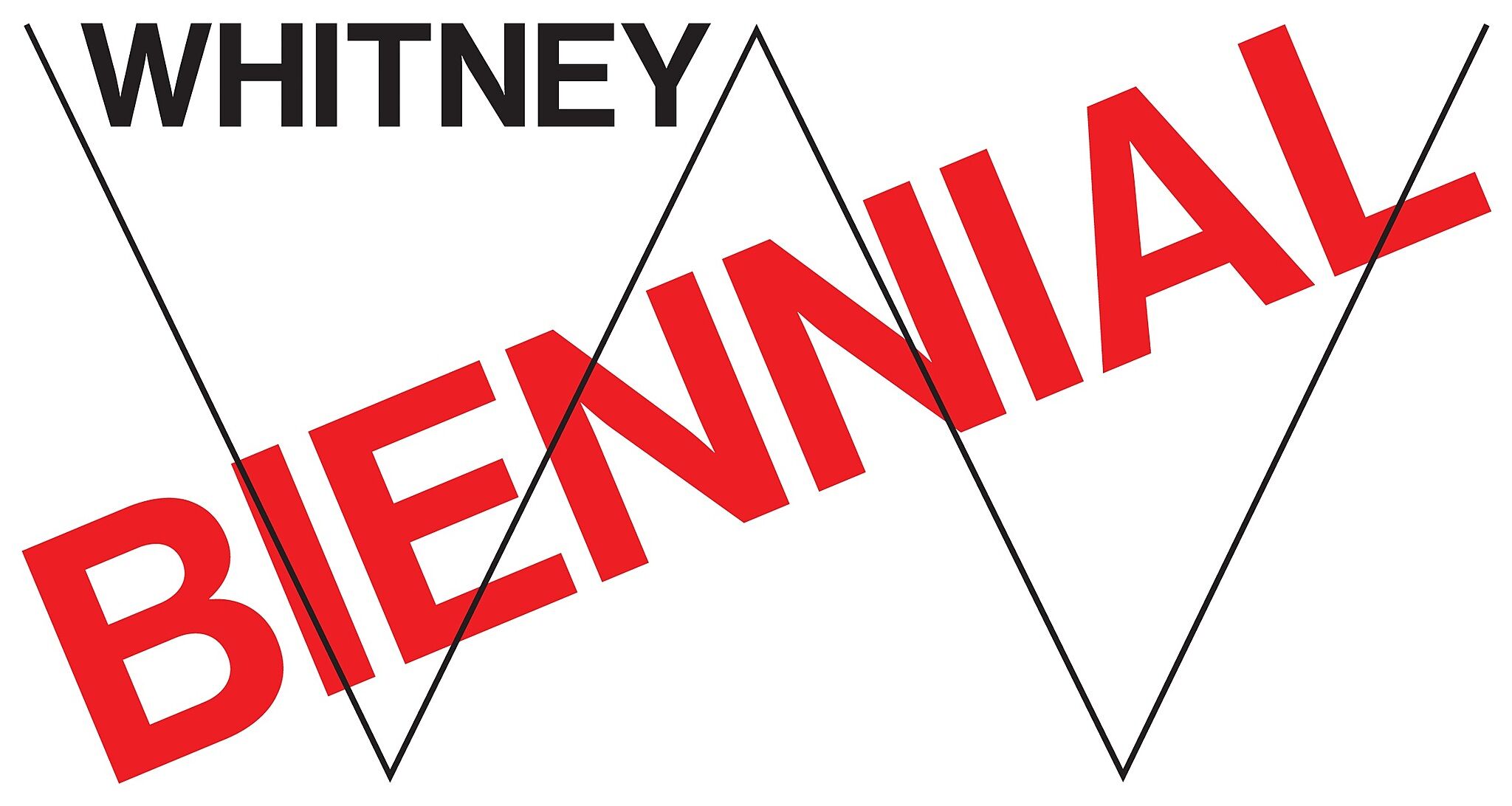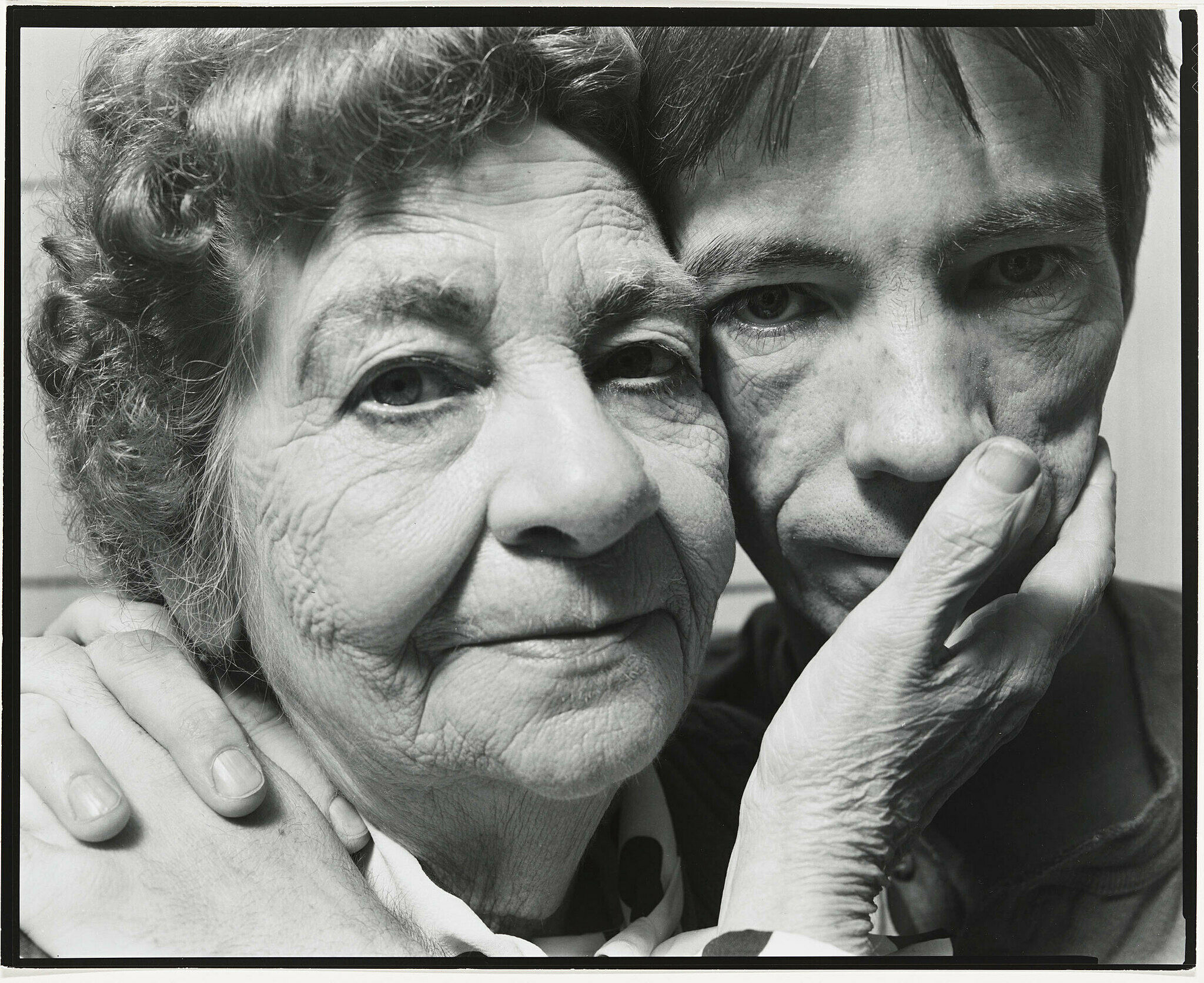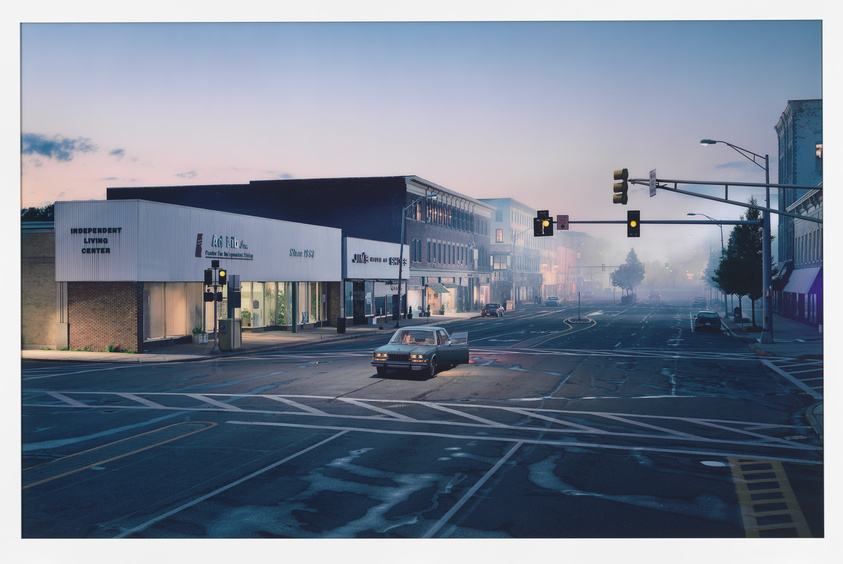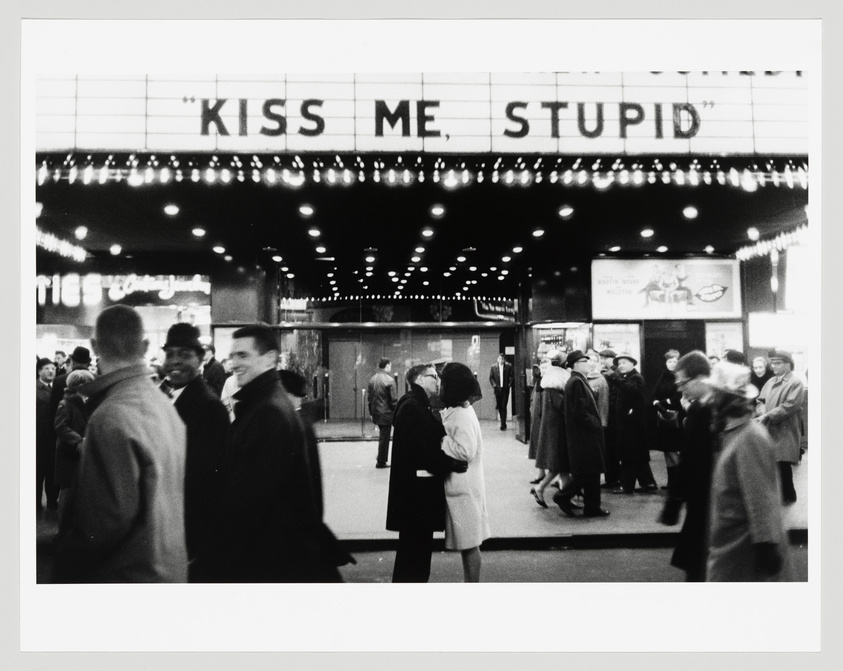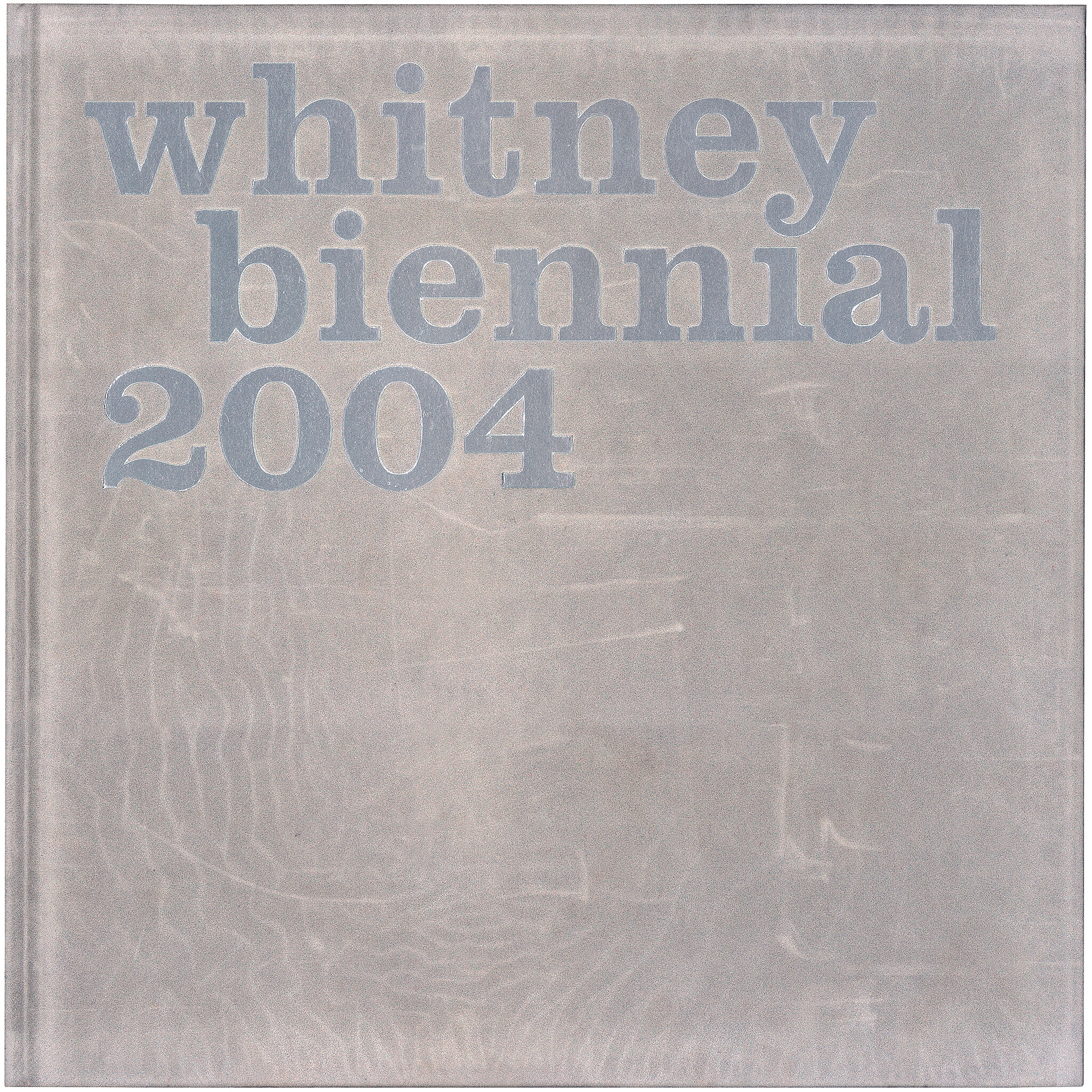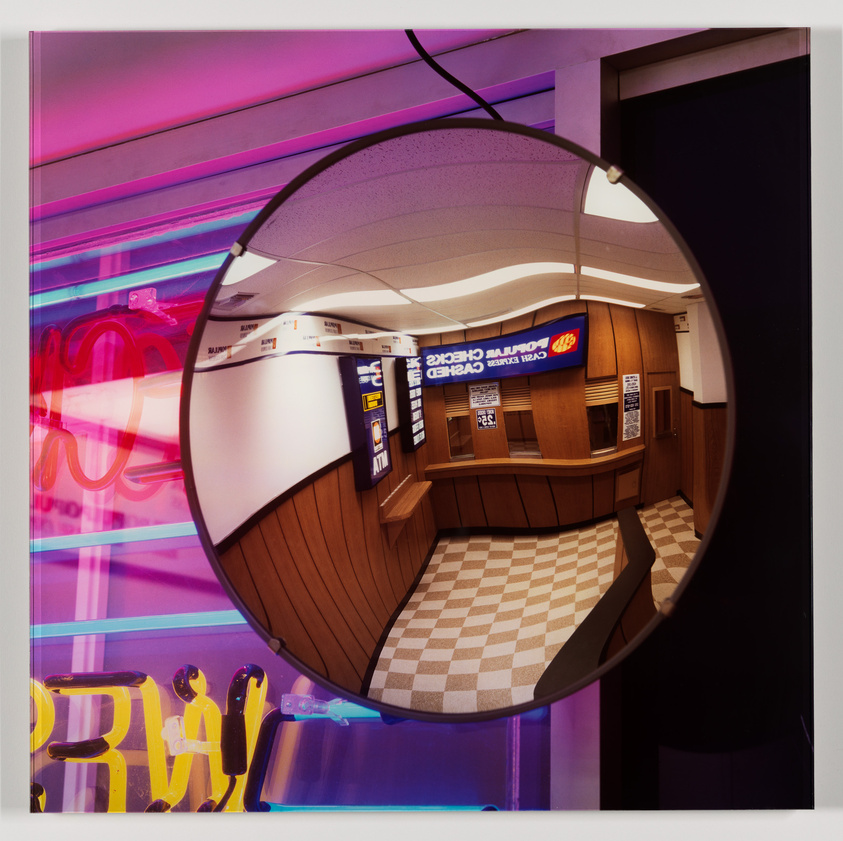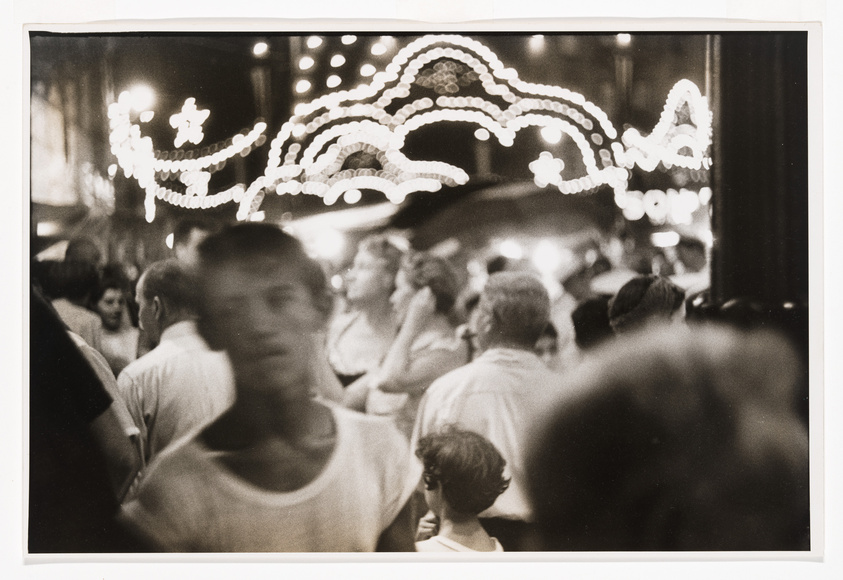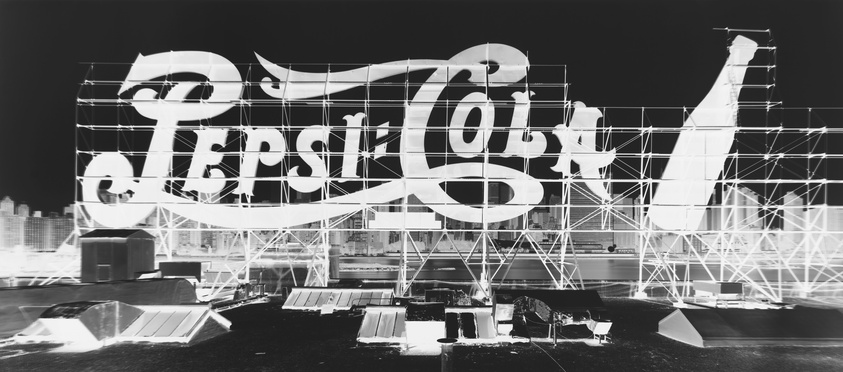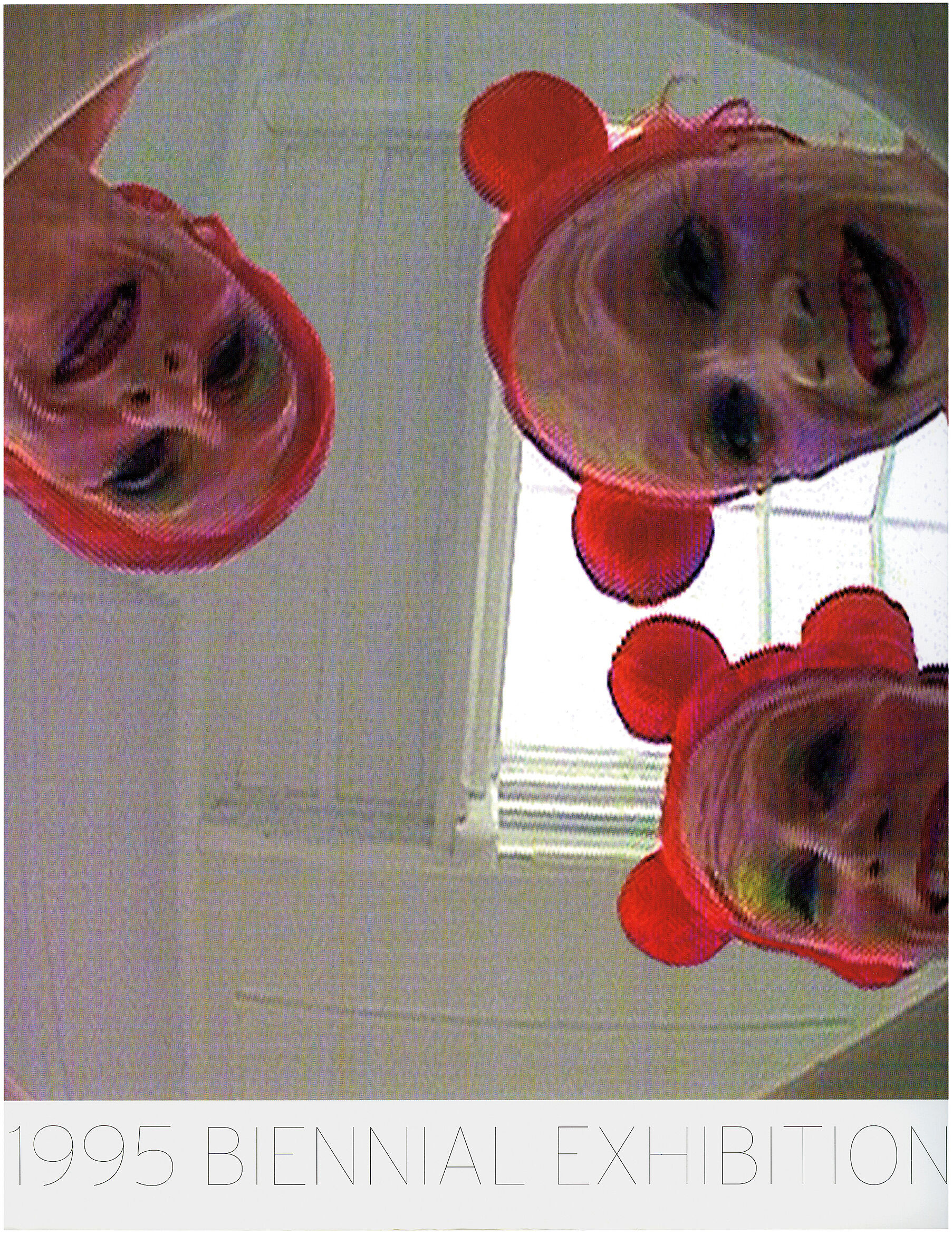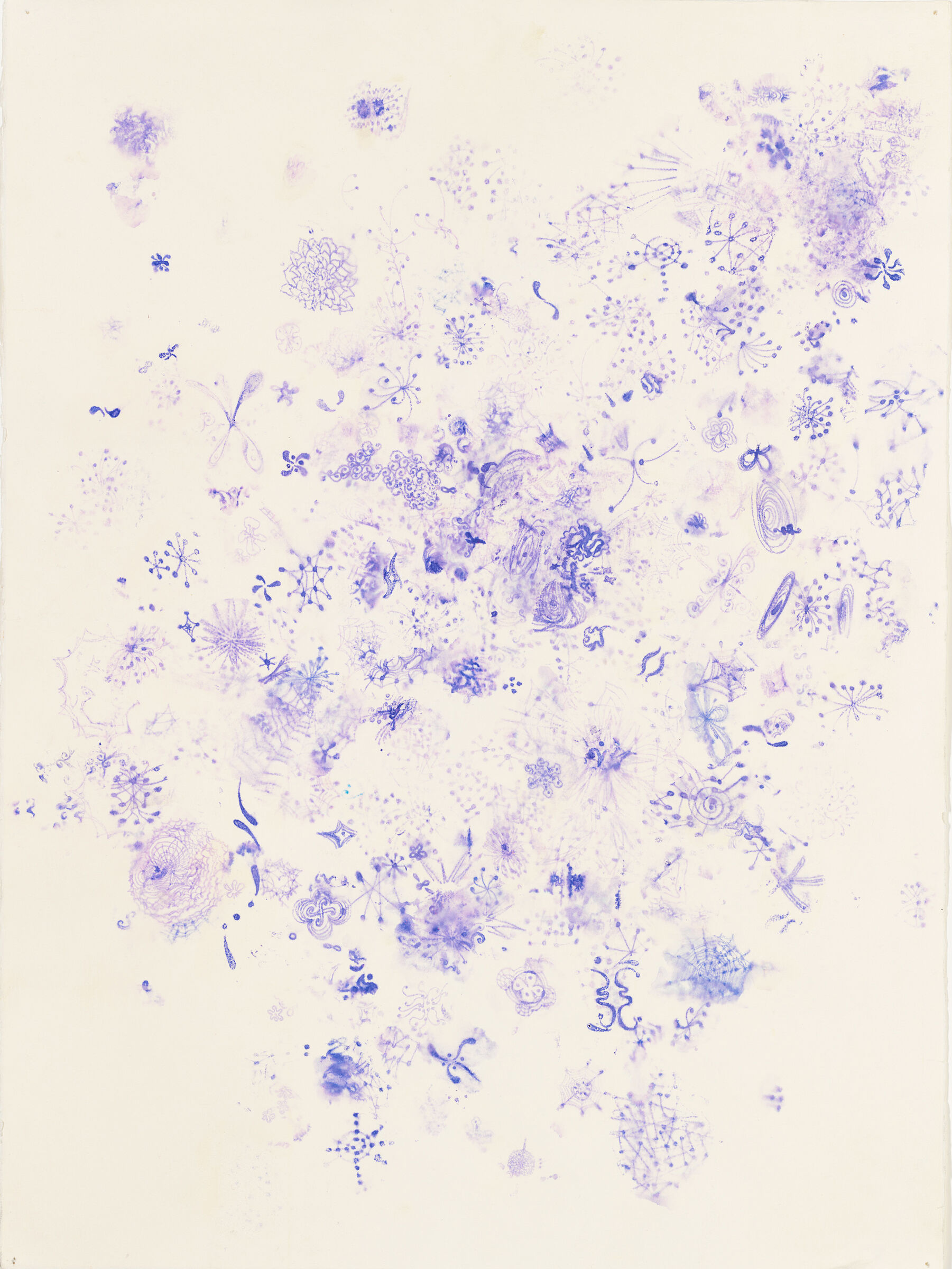Catherine Opie
1961–
Whether capturing the diversity of the LGBTQ community, the panoramic geometries of Los Angeles freeways, or the abstract beauty of ice-fishing houses in rural Minnesota, Catherine Opie’s photographs constitute a rich portrait of contemporary America. Opie first gained attention in the early 1990s for her photographs of transgender women and men, drag queens, “leather dykes,” and others who fall outside traditionally assigned gender roles. With their formal composition and vivid, monochromatic backdrops, these images of sexual subcultures use art-historical tropes of photographic and painterly portraiture to cast light on communities unexamined by mainstream America.
Self-Portrait/Cutting is one of the artist’s first and occasional self- representations. Opie faces away from the camera; in the center of her back is a stylized line drawing that shows two skirted stick figures in front of a small house. The sun peeks out from behind a fluffy cloud, and two birds fly off in the distance. The crude, childlike drawing has not been rendered in crayon, however, but carved into Opie’s flesh with a scalpel. The wounds are fresh, and drips of blood trail down portions of the image. Opie explained that the photograph was about her “dream for a lesbian domestic relationship” and, as the scarified drawing suggests, “the contradictions within that wish.” Made on the heels of a difficult split with a long-term partner, the photograph conveys the artist’s personal desires and alludes to contested notions of family within the LGBTQ community. The visceral effect of the incised flesh also calls to mind the traumatic impact of the AIDS crisis on that community, the force of which was still being felt in 1993.
Introduction
Catherine Sue Opie (born 1961) is an American fine art photographer and educator. She lives and works in Los Angeles, as a professor of photography at the University of California, Los Angeles.
Opie studies the connections between mainstream and infrequent society. By specializing in portraiture, studio, and landscape photography, she is able to create pieces relating to sexual identity. Through photography, Opie documents the relationship between the individual and the space inhabited, offering an exploration of the American identity, particularly probing the tensions between the constructed American dream and the diverse realities of its citizens. Merging conceptual and documentary styles, Opie's oeuvre gravitates towards portraiture and landscapes, utilizing serial images and unexpected compositions to both spotlight and blur the lines of gender, community, and place while invoking the formal gravitas reminiscent of Renaissance portraiture and hinting at her deep engagement with the history of art and painting.
She is known for her portraits exploring the Los Angeles leather-dyke community. Her work is held in the collections of the Museum of Modern Art and the Solomon R. Guggenheim Museum, and she has won awards including the United States Artists Fellowship (2006) and the President’s Award for Lifetime Achievement from the Women’s Caucus for Art (2009).
Wikidata identifier
Q50049
Information from Wikipedia, made available under the Creative Commons Attribution-ShareAlike License . Accessed November 22, 2025.
Introduction
American photographer whose work focuses on portraits. Her series "Being and Having" (1991) and Portraits (1993–1997) depict her friends in the lesbian and gay community in Los Angeles.
Country of birth
United States
Roles
Artist, instructor, photographer
ULAN identifier
500056896
Names
Catherine Opie
Information from the Getty Research Institute's Union List of Artist Names ® (ULAN), made available under the ODC Attribution License. Accessed November 22, 2025.

